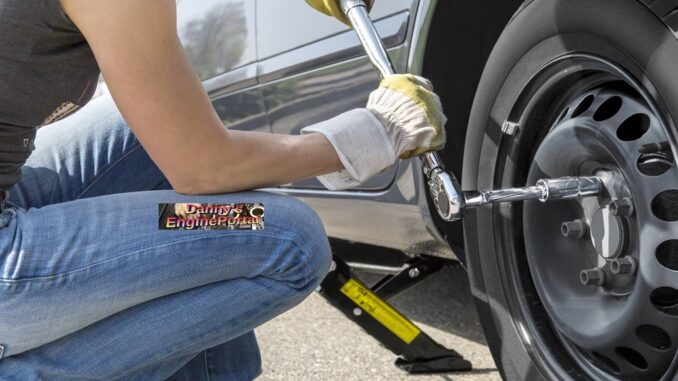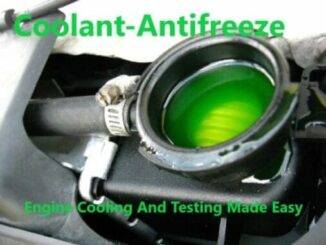
It can be difficult to make your own car repairs, especially if you don’t know, auto repair basics.
So, the first thing you should do is, get your hands on a good, auto repair basics repair manual.
Also, getting a repair manual that’s specific to your model of car, can give you great insight. Because, it will show you where parts are located, along with any special functions or techniques you need to know.
So, most auto repair basics repair manuals, are “step by step guides”, on how to fix things. Remember, while many cars are essentially the same, different makes and models do have subtle differences.
Also, remember to read your owner’s manual, because it is specific to your car. But remember, one of the biggest steps to any DIY project, is knowing when not to do it yourself.
Above all, be sure that you know your experience level. And, don’t try a DIY project that’s too big to handle.
So, at some point, you’re going to feel comfortable, fixing minor car problems. And, doing your regular maintenance. Then, you’re likely going to want to try, more complicated repairs. With the exception of major engine work, you can do many repairs by yourself. And, from the comfort of your own garage or street. Above all, diagnosing the problem, is the hardest part of some of the more difficult repairs.
Auto Repair Basics
First, mechanics require tools and there are a few essentials that you’ll need, to make most car repairs. So, a beginner’s set of tools will help. And, can include screwdrivers, a few wrenches, pliers, and a good pair of channel locks. Add a jack, penetrating oil, and a little safety gear, and you’re good to start.
Diagnosing Common Problems:
- What’s leaking under my car?
- Is the color of my exhaust okay?
- Should my engine sound like that?
First, we’ve all asked these questions. So, you can get a pretty good idea, of what’s causing many problems, without going to the mechanic.
Fluid Leaks
So, when it comes to fluid leaks, you can usually identify them, by their color. First, grab a paper towel, and dab it in the leak. If it’s green or pink, you’re probably looking at coolant. Power steering fluid is yellowish, and transmission fluid, is a redish color. So, every fluid has a distinct color. As a result, this is a pretty easy one to diagnose. Even with only knowing, auto repair basics.
Exhaust Smoke
So, white, blue, or black smoke coming out of your exhaust. But, each color will each point you, in a different direction. It may be a problem with the engine, valves or your head gasket. So, it’s best not to delay when you see these problems. Because, they will only get worse.
Engines
First, you should be listening for unusual sounds. And, which part of the car they’re coming from. So, there are also common signs, that you’re low on power steering fluid. And, when something may be wrong with your brakes. Other common car problems include, overheating and that unbearable moment, when your engine simply won’t turn over.
The good news is that, there is a reason for everything in auto mechanics. It’s just a matter of narrowing it down to the real problem. That is why mechanics, pros and amateurs alike, use onboard diagnostics (OBD) tools. Consequently, to help them find these problems quickly.
Preventive Maintenance
Consequently, many parts on your car are interrelated. Above all, never neglect, even simple routine maintenance. For instance, not changing the oil or checking coolant, can lead to poor fuel economy, or costly breakdowns.
Learn How To Detect Many Common Car Problems, By Using Your Senses:
The more you know about auto repair basics, the more likely you’ll be able to, head off repair problems.
You can detect many common car problems, by using your senses:
- Eyeballing the area around your car.
- Listening for strange noises.
- Sensing a difference in the way your car handles.
- Noticing unusual odors.
Looks Like Trouble
Small stains or an occasional drop of fluid under your car, may not mean much. But, wet spots deserve attention, so, check puddles immediately.
You can identify fluids, by their color, and consistency:
- Yellowish green, pastel blue or fluorescent orange colors, indicate an overheated engine. Or even an antifreeze leak caused by a bad hose, water pump or leaking radiator.
- A dark brown or black oily fluid means, the engine is leaking oil. A bad seal or gasket could cause the leak.
- A red oily spot, indicates a transmission or power steering fluid leak.
- Also, a puddle of clear water, usually is no problem. It may be normal condensation, from your car’s air conditioner.
Smells Like Trouble (auto repair basics)
Some problems are under your nose. You can detect them, by their odor:
- The smell of burned toast – a light, sharp odor – often signals, an electrical short and burning insulation. To be safe, try not to drive the car, until the problem is diagnosed.
- The smell of rotten eggs. A continuous burning Sulphur smell. Usually indicates a problem, in the catalytic converter or other emission control devices. Don’t delay diagnosis and repair.
- A thick acrid odor usually means, burning oil. Look for signs of a leak.
- The smell of gasoline vapors after a failed start, may mean you have flooded the engine. Wait a few minutes before trying again.
But, if the odor persists, chances are there’s a leak in the fuel system. As a result, a potentially dangerous problem, that needs immediate attention:
- Burning resin or an acrid chemical odor, may signal, overheated brakes or clutch. Check the parking brake. Stop and allow the brakes to cool, after repeated hard braking on mountain roads. Light smoke coming from a wheel indicates a stuck brake. As a result, the car should be towed for repair.
- A sweet, steamy odor indicates a coolant leak. But, it’s possible that the temperature gauge or warning light, does not indicate overheating. Above all, drive carefully to the nearest service station, keeping an eye on your gauges. If the odor is accompanied by a hot, metallic scent and steam from under the hood. Then, your engine has overheated. Pull over immediately. Because, continued driving could cause, severe engine damage.
Conclusion
So, every car is going to have quirks, and there will inevitably be a few things, you can’t figure out. The main point to remember is that, auto repair basics may not be as difficult as they look. And, it’s pretty hard to screw things up. Even newer cars with more electronics, have parts that can be repaired in your driveway. Finally, it’s just a matter of, trusting yourself to do it.
BY DANNY BENDER




